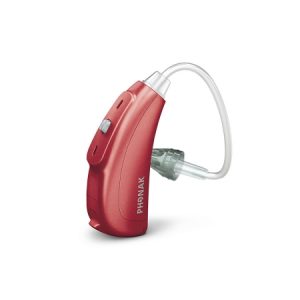Types of Hearing Aids
There are two types of hearing aids currently on the market. In addition, several other types are coming onto the market. Some of them are great. Some of them are not so great. This article will focus on the types that are currently available.
Behind-The-Ear: This type of hearing aids is used by many people who need assistance with hearing or have lost their hearing. A behind-the-ear hearing aid is simply a device that is worn behind the ear. The wearer puts it on and uses a device to make sounds audible to him. It has adjustable volume controls, so the wearer can be quiet so that sounds do not bother him or very loud to hear everything. Most devices are made to sit behind the ear canal.
 Hard Plastic: Hard plastic hearing aids are usually small and roundish in shape. They are lightweight, easy to handle, comfortable to the ear, and have good sound quality. They work via a speaker mechanism that projects the sound captured by the electronics into the outer ear. Unfortunately, most hard plastic models can reproduce only soft sounds.
Hard Plastic: Hard plastic hearing aids are usually small and roundish in shape. They are lightweight, easy to handle, comfortable to the ear, and have good sound quality. They work via a speaker mechanism that projects the sound captured by the electronics into the outer ear. Unfortunately, most hard plastic models can reproduce only soft sounds.
Digital: A digital hearing aids works via an electronic device that captures the sound in your ear. The electronics are generally built into a tiny gadget that sits just above the eardrum. There are three major types of digital hearing aids; the BTE (behind the ear), the MP3 (in the ear), and the ITC (in the canal). These types all have their advantages and disadvantages, so you should read about them carefully before deciding which one to buy.
There are also many different types of hearing aids, so make sure you understand their specific uses. These are analogue hearing aids, digital hearing aids, and the ITC type. Each type has its advantages and disadvantages. Since there are so many different types, it would be wise to first consult with your audiologist. They will be able to help you determine what type will suit you best.
There are two main styles of hearing aids: behind the ear and in-the-canal. Behind the ear: these are usually more expensive than in-the-canal. They are also more difficult to adjust because they are not fully encased in the canal. However, if they are correctly adjusted, they are pretty effective.
In-the-Canal: Behind the ear, hearing aids also use an earmold to cover the sensor and transmitter. Earmold styles range from very small, almost invisible, to large and very visible. You can also have both the transmitter and the sensor integrated into one piece of the earmold. However, most people like the in-the-canal styles because they are more discreet.
Another consideration when choosing SASHC Hearing aids Adelaide is to consider how much you can tolerate the sound. If you have extreme hearing loss or thunderous noises, you should probably invest in a larger unit. On the other hand, if you tend to have mild to moderate hearing loss, you may want to stick with a smaller device. The choice depends on your personal preferences. If you are willing to accept the occasional break in comfort while using your new device, then wearing hearing aids are a good option for you.
There are three main IIC hearing aids – behind the ear, in the canal, and behind the neck. All three are great options because they all perform similarly. Behind the ear, devices are great for people who are experiencing mild to moderate hearing loss. They are placed in the ear canal and transmit their signal to the device in the device housing. For those with moderate to severe hearing loss, a behind the ear device is probably the best option.
Some patients who are suffering from profound hearing loss may benefit from in-the-canal devices. If you suffer from this type of loss, your option may be either an in-the-canal unit or a behind the ear hearing aid. In-the-canal aids are typically larger than those in the behind the ear. Therefore, they offer higher comfort for those with low profile hearing aids because they are placed directly in the canal. However, they are also typically harder to adjust for those suffering mild to moderate loss of hearing.
If you don’t choose a hearing aid specifically designed for you, other options may help you. One such option is a bte hearing aid (behind-the-ear (bte) hearing aids). These hearing aids are smaller than those in the canal because they are placed directly behind the ear. In addition, they are often adjustable and provide a more comfortable fit for those who are experiencing some degree of hearing loss.
